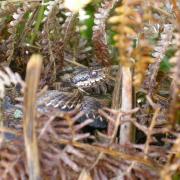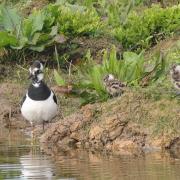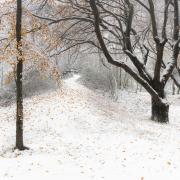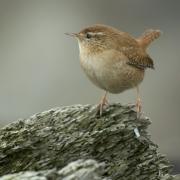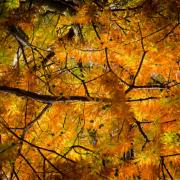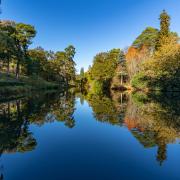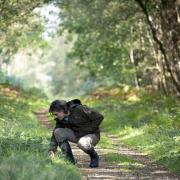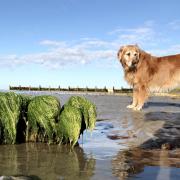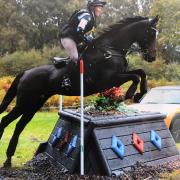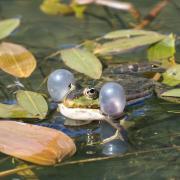Once believed to be extinct in Sussex, otters are slowly making a welcome return to our rivers and wetlands. Linda Harrison discovers how a task force of volunteers is helping to record their comeback and how difficult it can be
Otters’ first instinct is to remain elusive and secretive, which can make finding them a bit of a problem.The humans doing the looking can be found wading through undergrowth and around riverbanks in the Sussex countryside. And while some like to hunt in groups, others prefer to remain solitary, emerging at dawn or dusk.Meet the Otter Spotter task force – a growing band of volunteers who spend their spare time scouring the countryside for clues of otter activity.Signs can include footprints, droppings – known as spraint – or maybe even an otter home, known as a holt.The volunteers all learn their craft from Fran Southgate, Sussex wetland landscapes officer at the Sussex Wildlife Trust. Fran now has about 200 trained Otter Spotters under her wing.As yet, the free Otter Spotter training day cannot take place in Sussex due to the lack of otter signs here. So volunteers are asked to travel to Winchester in Hampshire for their training. Fran says: “The volunteers learn all about what to look for when they’re out and about. “They are shown otter footprints and find out how to compare them to other prints. They also get a lesson in what otter spraint looks – and smells – like!” According to Fran, the aroma is “a bit like Jasmine tea, and a bit fishy”, and spraint is usually found on trees, rocks in the middle of rivers, and patches of moss. There are also other ways of distinguishing otter spraint from that of other animals like mink and badger.“Otters have a diet rich in fish, so the spraint often contains fish scales, frog bones, and bits of crustacean,” explains Fran. “Otters are quite adaptable though, they also eat a lot of eels, plus crayfish, toads, mollusks, shellfish – even dragonflies and slugs. They’ll also occasionally eat small mammals and birds.”The footprints are also different. Otters have webbed feet, with a 2-3 inch footprint – bigger than that of a mink, which tends to be about 1 inch across. Meanwhile, otters, badgers and mink all have five toes, and dogs and foxes have four.“We also train the Otter Spotters in the easiest places to check for otters – such as bridges close to rivers,” says Fran. “And we look at the wider river ecology and how otters fit into that landscape.”Volunteers learn what an otter looks like – and the differences between it and the American mink, which it is often confused with. Otters are almost twice the size of mink, growing to about 10kg and up to 1.2 metres long. They are also more muscular. And while mink tend to be black or dark brown, otters are a lighter brown, with a large white patch under the chin and on the chest. Once trained, the Otter Spotters report any signs of otter activity while they are out and about, backed up with helpful grid references.Their training also allows them to do valuable work on national projects, such as the recent Environment Agency Fifth Otter Survey of England 2009-2010. Out of the 3,300 sites surveyed for the report, evidence of otters was shown to have increased to an encouraging 58.8 per cent, from 5.8 per cent in the first survey of 1977-79.Fran encourages anyone who sees an otter to report it to the Sussex Wildlife Trust. Amateur Otter Spotters ideally need to provide a note of the time, date and location of the sighting, as well as their contact details.One thing Otter Spotters need in abundance is patience. Even Fran admits she’s never discovered an otter footprint in Sussex – let alone actually seen a live otter.“We do know that otters are back in Sussex,” she says. “There are otter sightings sporadically, but the sightings have got more frequent. The area with the most activity is the West Sussex/Hampshire border, but even there we’ve only had about four individual sightings.“The thing about being an Otter Spotter in Sussex is that you may not have many otters to spot. But it’s so important that we know if otters are around.” For more information on how to join the Otter Spotters, visit www.sussexotters.org or call 01273 492630
A history of lossOtters were once widespread in Sussex and the rest of the UK, but from the 1960s the population was decimated due to industrial and agricultural pollution along with hunting and the destruction of their habitat. They became extinct in many parts of the UK.Fran says: “Otters were refugees found in Scotland, Wales and Cornwall. Over the years, they’ve started to creep southwards and eastwards, but Kent, Surrey and Sussex have been the last counties to get them back again.“In the 80s and early 90s, otters were reintroduced to areas such as Hampshire and East Anglia. But they were reintroduced without enough food or habitat. Since then, there has been more emphasis on habitat restoration. We’re just being patient. I’ve been here for 10 years and we’ve only just got our otters back.”There is only one species of otter in the UK, the European or river otter Lutra lutra. Sadly, any sightings of actual otters in Sussex are usually when one is found dead. No females had been sighted until last year, when one was reported dead by a roadside in East Sussex. Otters are difficult to observe in the wild as they are generally nocturnal, solitary and secretive creatures. And they are very territorial – the males can use up to 40km of river as their territory.Meanwhile, female otters have a smaller territory, but it takes around two years for them to reach breeding age. They only usually breed once a year and don’t usually live beyond the age of four in the wild.



